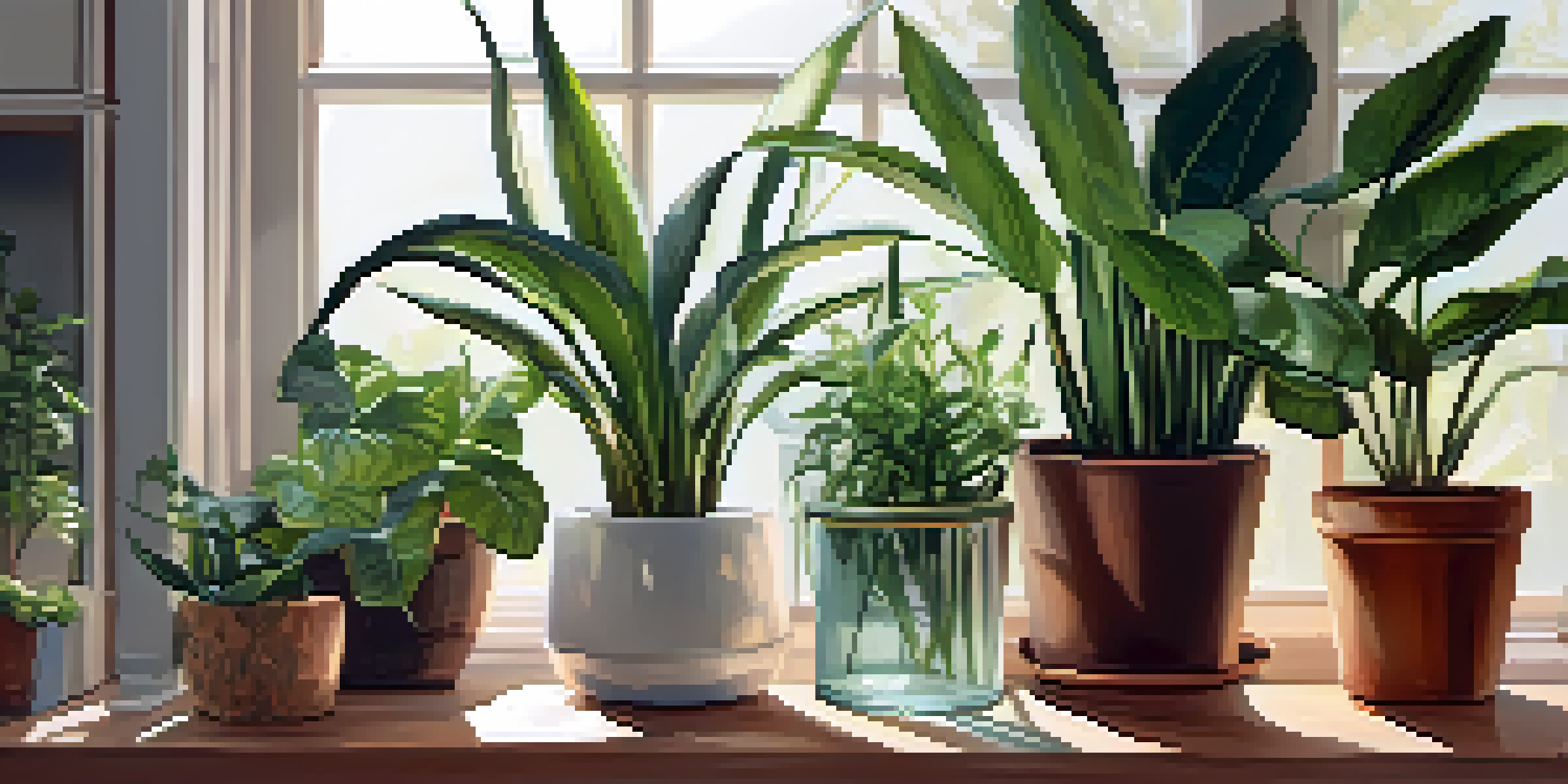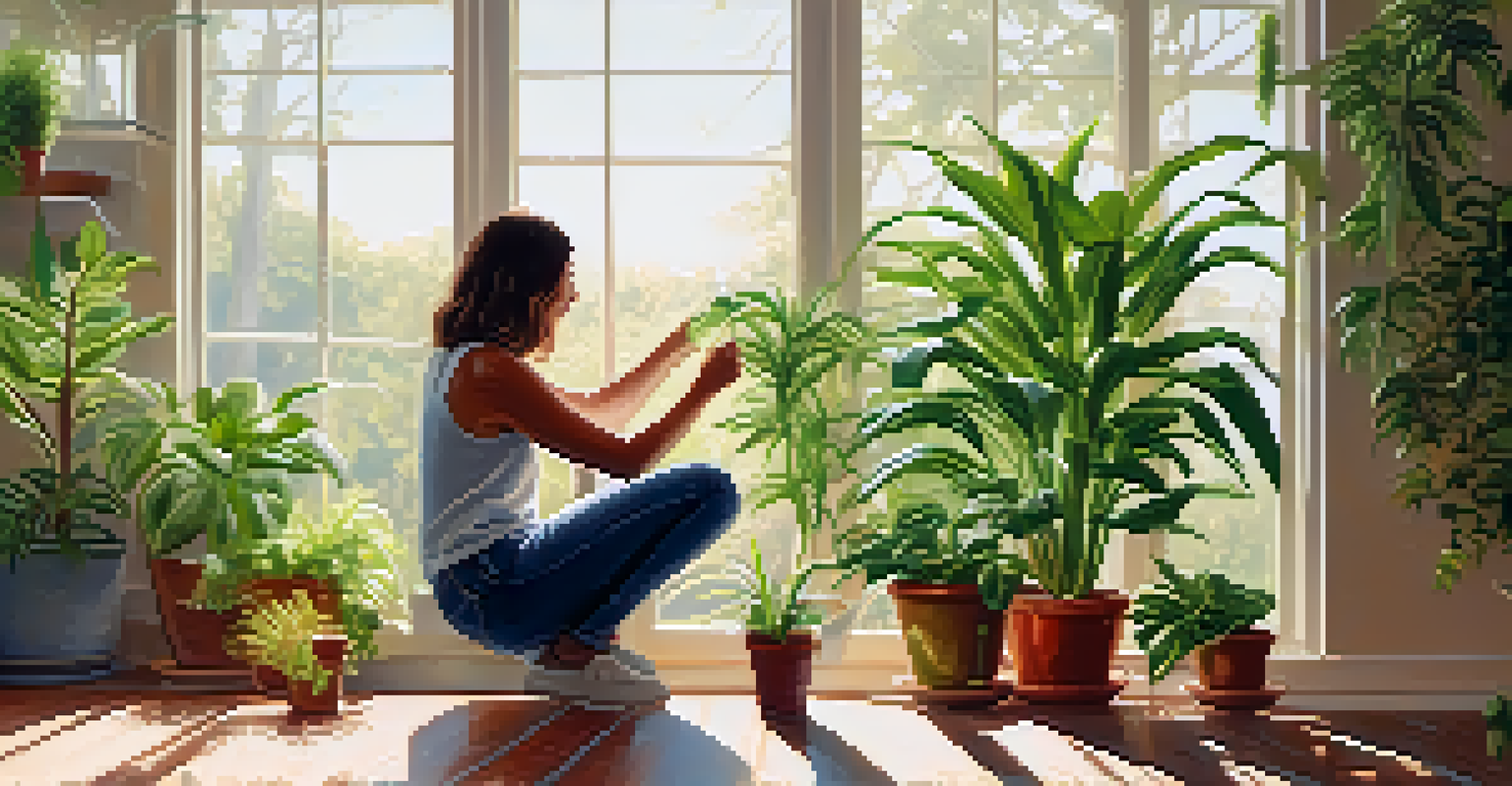Choosing Indoor Plants for Beginners: Easy Care Options

Why Indoor Plants Are Great for Beginners
Indoor plants can be a fantastic addition to your home, especially for beginners. They not only enhance your living space but also improve air quality and boost your mood. Imagine coming home to a vibrant green oasis that brings a smile to your face every time you walk in.
Plants make the world look beautiful.
Starting with indoor plants is less intimidating than you might think. Many varieties are incredibly forgiving and can thrive even in less-than-ideal conditions. This makes them perfect companions for those just beginning their plant journey.
Plus, caring for plants can be a rewarding hobby that teaches responsibility and patience. As you watch your plants grow, you'll develop a connection that adds a new layer of joy to your everyday life.
Factors to Consider When Choosing Plants
When selecting indoor plants, consider factors like light conditions, humidity, and your lifestyle. Do you have a sunny windowsill, or is your space more shaded? Choosing plants that match your environment will set you up for success.

Additionally, think about how much time you can dedicate to plant care. Some plants require more attention than others, so it’s important to pick ones that align with your schedule. A busy lifestyle might call for low-maintenance options.
Indoor Plants Boost Well-Being
Adding indoor plants to your home enhances air quality and elevates your mood.
Lastly, consider any allergies or sensitivities. Some plants can be toxic to pets or people, so it's wise to do a little research before bringing a new plant into your home.
Low-Light Plants: Perfect for Shadier Spaces
If your home doesn’t get a lot of natural light, don’t worry! There are plenty of low-light plants that thrive in darker conditions. For example, the Snake Plant is known for its ability to survive with minimal sunlight.
The love of gardening is a seed once sown that never dies.
Another great option is the Pothos, which can adapt to various lighting situations and is also known for its trailing vines. These plants can bring a touch of green to even the gloomiest corners of your home.
These low-light champions not only beautify your space but are also incredibly easy to care for, making them ideal for beginners. Just remember to water them sparingly to avoid overwatering!
Succulents: Low Maintenance and Stylish
Succulents have surged in popularity, and for good reason! They come in various shapes and colors, adding a unique flair to any room. Not to mention, they require very little water, making them perfect for forgetful plant parents.
These hardy plants store water in their leaves, allowing them to thrive in dry conditions. This means you can enjoy their beauty without the constant worry of watering them every day.
Choose Low-Maintenance Varieties
Selecting forgiving plants like succulents and ZZ Plants makes it easier for beginners to succeed.
Just place them in a sunny spot, and you’re good to go! Remember, less is more when it comes to watering—allow the soil to dry out completely between waterings.
Easy-Care Foliage Plants for Beginners
Foliage plants like the ZZ Plant and Spider Plant are excellent options for beginners. The ZZ Plant is incredibly resilient and can tolerate neglect, making it a perfect choice for those new to plant care.
Spider Plants are also forgiving and can thrive in various conditions. Plus, they produce 'baby' plants that you can propagate and share with friends, adding to the fun of plant ownership.
These plants not only add greenery to your home but also require minimal care, allowing you to ease into your new hobby without feeling overwhelmed.
Caring for Your Indoor Plants: Basic Tips
Once you've chosen your plants, it's essential to know how to care for them properly. Start by understanding their watering needs—overwatering is one of the most common mistakes beginners make. Always check the soil moisture before giving them a drink.
Additionally, consider the humidity levels in your home. Some plants thrive in a more humid environment, so you might want to mist them occasionally or place a small humidifier nearby.
Join a Plant Community for Support
Connecting with fellow plant enthusiasts provides valuable tips and encouragement on your plant care journey.
Finally, don’t forget about fertilizing! A balanced fertilizer can help your plants grow strong and healthy, but be sure to follow the recommended guidelines to avoid nutrient burn.
Troubleshooting Common Plant Problems
Even the best plant parents encounter issues from time to time. If your leaves are turning yellow, it could be a sign of overwatering or insufficient light. Identifying the problem early can help you save your plant before it's too late.
Pest problems can also arise, so keep an eye out for any small critters or webbing on your plants. Regularly inspect your plants and take action if you notice anything unusual, as early intervention is key.

Remember, every plant has its quirks, and learning to care for them is part of the journey. Don’t be discouraged by setbacks; they’re simply opportunities to learn and grow as a plant enthusiast.
Finding Your Plant Community for Support
Joining a plant community can be incredibly beneficial for beginners. Whether online or in-person, connecting with fellow plant lovers can provide you with valuable tips, advice, and support as you navigate your plant journey.
Social media platforms like Instagram and Facebook have vibrant plant communities where you can share your experiences and ask questions. You might even find local meet-ups or plant swaps in your area!
Building relationships with other plant enthusiasts can deepen your appreciation for plants and help you become a more confident caregiver. Plus, it’s always fun to share your plant successes and learn from others.